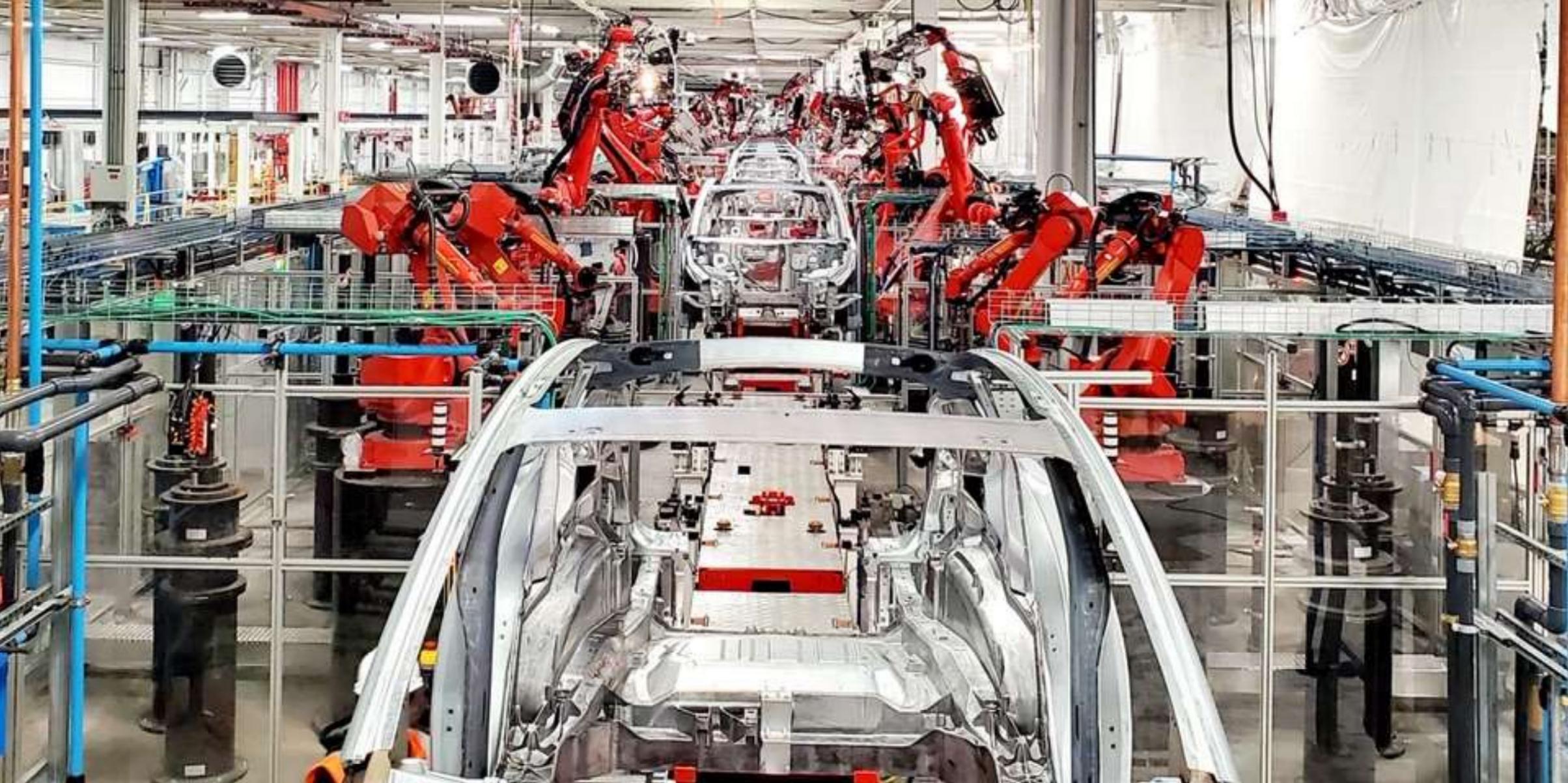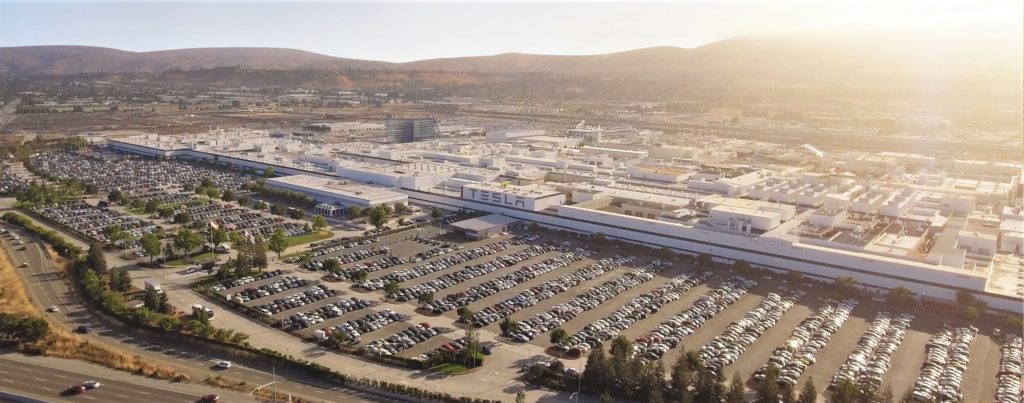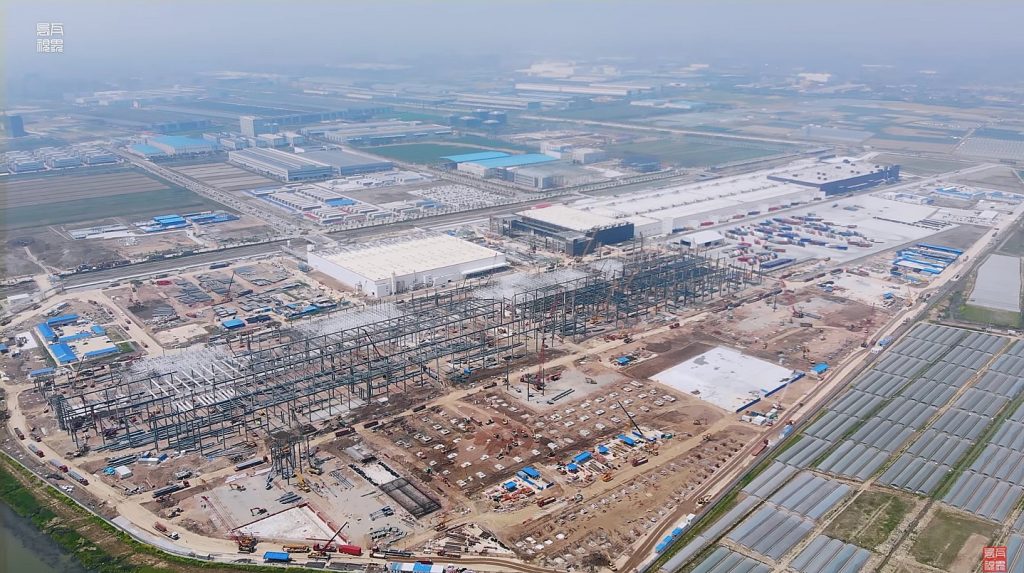

News
Elon Musk’s Tesla ‘Alien Dreadnought’ factory is coming to form–just not where critics expect it
There are many aspects of the Tesla ecosystem and Elon Musk’s past forecasts that critics love to attack. Among the most notable of these is the CEO’s vision of an “Alien Dreadnought” factory, an electric car production facility that is so automated, it resembles the extraterrestrial machines depicted in pop culture. Contrary to what critics today would say, Tesla’s hyper-automated factory is actually coming to form — it’s just not where it was initially expected to be.
Elon Musk’s Alien Dreadnought concept was initially intended for the production of the Model 3. Perhaps this is the reason why Musk originally announced an incredibly aggressive timeframe for the all-electric sedan’s ramp. Those who have followed the Tesla story over the past few years would know that the dreadnought did not come to pass. As issues mounted and delays became more prominent in the Model 3 ramp, Tesla and Elon Musk were forced to abandon the idea and instead adopt a manufacturing system that uses machines and people.
The Fremont factory continues to function in this manner until today. Just recently, Tesla critics were discussing how much Tesla is failing since it still maintains its sprung structure-based GF4 line. Others mocked the fact that some Model Y were getting accessories such as floormats installed on the grounds of the Fremont factory. While some criticism is warranted considering that Elon Musk’s Alien Dreadnought factory is yet to pass in its main vehicle plant, one thing is conveniently forgotten by critics: the Fremont factory is not the only Tesla facility that’s producing vehicles today.

Over in China, Tesla’s Gigafactory Shanghai is now back to full operations. And true to its reputation, the facility’s buildout continues to be insanely quick. The production of the Made-in-China Model 3 is already ongoing, with recent reports stating that around 3,000 units of the all-electric sedan are being manufactured every week. The construction of the Phase 2 zone, widely considered to be a facility intended for Model Y production, is also continuing at a rapid pace. Based on the way Gigafactory Shanghai is designed and the way that it’s ramping, it appears that the facility is well on its way towards becoming the first of Elon Musk’s Alien Dreadnought factories.
One thing that may be worth considering is the fact that the Fremont factory was not designed by Tesla. The California-based car factory’s history dates as far back as 1962, when it operated as the General Motors Fremont Assembly site until 1982, when it was closed. The plant was reopened in 1984 as the New United Motor Manufacturing, Inc. (NUMMI) plant, a joint venture between Toyota and General Motors, where it continued to produce vehicles until 2010. Tesla later bought the factory to produce the Model S sedan, a decision that was panned by critics then as an unnecessary expense.

With this in mind, it could be said that Tesla was not able to start with a blank canvas for its electric car production activities in the Fremont factory. The facility was constructed with conventional car making in mind, and Tesla essentially had to adapt its processes to the factory’s layout. Elon Musk’s admitted hubris aside, it would be quite a challenging endeavor to convert an automotive factory that was initially opened in 1962 into a hyper-automated, futuristic electric vehicle manufacturing machine. These challenges do not exist in Gigafactory Shanghai.
For its China-based site, Tesla was able to design a factory that’s optimized from the ground up for EV production. A look at the activities in the Phase 1 building would show that the site has notable similarities with the Fremont factory’s “tent-based” GA4 line, with its straightforward production process and its easy access to supply trucks. In a way, Gigafactory Shanghai’s Phase 1 zone is GA4 on steroids, and it seems to be working very well so far. With Gigafactory 3 now running, and with the facility’s Model Y production site coming to form, Tesla now has another opportunity to pursue Elon Musk’s Alien Dreadnought idea. But this time around, the company will be attempting the concept from a blank slate. And that might make all the difference.

The signs are already there. Recent drone flyovers in the Gigafactory Shanghai site show deep excavations connected to the Phase 1 building’s stamping area. Tesla has not revealed that the area is intended for, though speculations among the electric car community suggest that the location may host the company’s giant casting machine, which is designed to make vehicles easier to produce.
Elon Musk and Tesla have teased that the massive casting machine will be used for the Model Y, but the company may be looking to adopt such a technique for the Made-in-China Model 3 as well. And this is just the tip of the iceberg. Considering that it’s working with a blank canvas in Gigafactory Shanghai, Tesla can explore and develop automated vehicle production processes that would make the facility deserving of Musk’s Alien Dreadnought title.
Ultimately, it may not be too long before Tesla critics would have to swallow yet another bitter pill. Elon Musk’s Alien Dreadnought concept lives on, and while it may not be starting at the Fremont Factory as initially intended, there is very little that could stop the electric car maker from adopting the idea in facilities beyond Gigafactory Shanghai. Gigafactory Berlin will undoubtedly be incredibly automated as well, and there’s a good chance the Cybertruck Gigafactory will be too.
News
SpaceX’s Crew-11 mission targets July 31 launch amid tight ISS schedule
The flight will lift off from Launch Complex 39A at Kennedy Space Center in Florida.

NASA and SpaceX are targeting July 31 for the launch of Crew-11, the next crewed mission to the International Space Station (ISS). The flight will lift off from Launch Complex 39A at Kennedy Space Center in Florida, using the Crew Dragon Endeavour and a Falcon 9 booster.
Crew Dragon Endeavour returns
Crew-11 will be the sixth flight for Endeavour, making it SpaceX’s most experienced crew vehicle to date. According to SpaceX’s director of Dragon mission management, Sarah Walker, Endeavour has already carried 18 astronauts representing eight countries since its first mission with NASA’s Bob Behnken and Doug Hurley in 2020, as noted in an MSN report.
“This Dragon spacecraft has successfully flown 18 crew members representing eight countries to space already, starting with (NASA astronauts) Bob (Behnken) and Doug (Hurley) in 2020, when it returned human spaceflight capabilities to the United States for the first time since the shuttle retired in July of 2011,” Walker said.
For this mission, Endeavour will debut SpaceX’s upgraded drogue 3.1 parachutes, designed to further enhance reentry safety. The parachutes are part of SpaceX’s ongoing improvements to its human-rated spacecraft, and Crew-11 will serve as their first operational test.
The Falcon 9 booster supporting this launch is core B1094, which has launched in two previous Starlink missions, as well as the private Ax-4 mission on June 25, as noted in a Space.com report.
The four-members of Crew-11 are NASA astronauts Zena Cardman and Mike Fincke, as well as Japan’s Kimiya Yui and Russia’s Oleg Platonov.
Tight launch timing
Crew-11 is slated to arrive at the ISS just as NASA coordinates a sequence of missions, including the departure of Crew-10 and the arrival of SpaceX’s CRS-33 mission. NASA’s Bill Spetch emphasized the need for careful planning amid limited launch resources, noting the importance of maintaining station altitude and resupply cadence.
“Providing multiple methods for us to maintain the station altitude is critically important as we continue to operate and get the most use out of our limited launch resources that we do have. We’re really looking forward to demonstrating that capability with (CRS-33) showing up after we get through the Crew-11 and Crew-10 handover,” Spetch stated.
Lifestyle
EV fans urge Tesla to acquire Unplugged Performance for edge in fleet and security industry
Unplugged Performance has built a name for itself by producing performance upgrades for Tesla vehicles.

A growing number of Tesla enthusiasts and longtime community voices are calling on the electric vehicle maker to acquire Unplugged Performance, a California-based aftermarket company best known for tuning Tesla vehicles and developing specialized government fleet solutions under its UP.FIT division.
The idea was once considered a niche proposal among EV fans, but it is now gaining serious attention not just as a performance play but as a strategic move to deepen Tesla’s roots in the fleet and security industry.
A strategic fit
Unplugged Performance has built a name for itself by producing performance upgrades for Tesla vehicles, from track-optimized components to visual and aerodynamic upgrades. But in recent years, its UP.FIT division has pivoted toward a more functional future by outfitting Tesla vehicles like Model Ys for police, military, and government use.
That work has sparked growing calls for closer collaboration with Tesla, especially as the EV maker increasingly leans into autonomy, AI, and fleet services as core components of its next chapter.
“I posted this four years ago, but I think it’s more true now than ever,” wrote Whole Mars Catalog, a well-known Tesla investor and FSD Beta tester, on X. “Tesla should buy Unplugged. But not just as a Performance division. What they are doing with UP.FIT unlocks large government and commercial fleet purchases that can improve utilization.”
Tesla fans such as shareholder Sawyer Merritt echoed the sentiment, calling Unplugged a “great fit within Tesla.” adding, “They are literally located directly next to Tesla’s design studio in Hawthorne.”
Enabling the next wave
Supporters of the idea noted that integrating Unplugged into Tesla’s corporate structure could help accelerate the adoption of autonomous technologies in government sectors. With UP.FIT patrol cars already in use across some U.S. police departments, Tesla fans envisioned a future where self-driving Teslas could potentially revolutionize law enforcement, search-and-rescue, and public service logistics.
“Just imagine how autonomous patrol cars could transform policing and bring us into a safer future,” the veteran FSD tester wrote.
The benefits could also extend to Tesla’s existing consumer base. “They also have some incredible products in the works that I think will appeal to many ordinary Tesla drivers — not just those looking for performance or mods. Stuff that’s so good it should have come straight from the design studio next door,” Whole Mars Catalog noted.
Unplugged Performance, founded in 2013, shares not just a product vision with Tesla, but also geography. Its Hawthorne headquarters sits directly adjacent to Tesla’s design studio, and the two companies have maintained a close working relationship over the years. The aftermarket firm has long positioned itself as a “mission-aligned” partner to Tesla.
In response to the recent calls for acquisition, Unplugged Performance acknowledged the support from the community. “Our very existence is to support the Tesla mission with @UpfitTesla and @UnpluggedTesla,” Unplugged CEO Ben Schaffer posted on X. “We love working with Tesla and are grateful for the community’s support since 2013!”
News
Tesla debuts hands-free Grok AI with update 2025.26: What you need to know
All new Tesla vehicles delivered on or after July 12, 2025, will include Grok AI out of the box

Tesla has begun rolling out Grok, an in-car conversational AI assistant developed by xAI, to eligible vehicles starting July 12. The feature marks the most direct integration yet between Elon Musk’s artificial intelligence startup and Tesla’s consumer product lineup, offering drivers hands-free access to a chat-style companion while on the road.
Grok comes pre-installed on new vehicles
According to Tesla’s FAQ page for the feature, all new vehicles delivered on or after July 12, 2025, will include Grok AI out of the box. Owners of older vehicles may gain access through an over-the-air update, provided their vehicle meets a few hardware and software requirements.
Specifically, Grok is currently only supported on Tesla models equipped with an AMD infotainment processor and running vehicle software version 2025.26 and higher. Compatible models include the Model S, Model 3, Model X, Model Y, and Cybertruck. A Premium Connectivity subscription or active Wi-Fi connection is also required.
Tesla notes that additional vehicle compatibility may arrive in future software updates.
Grok’s features and limitations for now
Drivers can engage with Grok using the App Launcher or by pressing and holding the voice command button on the steering wheel. Grok is designed to answer questions and hold conversations using natural language, offering responses tailored to its chosen personality—ranging from “Storyteller” to the more eccentric “Unhinged.”
For fun, Tesla posted a demonstration of Grok likely running on “Unhinged” talking about what it would do to Optimus when they are on a date, much to the shock of the humanoid robot’s official social media account.
It should be noted, however, that Grok cannot currently issue commands to the vehicle itself, at least for now. Traditional voice commands for tasks like climate control, navigation, or media remain separate from Grok as of writing.
The feature is being released in Beta and does not require a Grok account or xAI subscription to activate, although that policy may change over time.
Grok privacy and in-car experience
Tesla emphasizes that interactions with Grok are securely processed by xAI and not linked to a user’s Tesla account or vehicle. Conversations remain anonymous unless a user signs into Grok separately to sync their history across devices.
Tesla has also begun promoting Grok directly on its official vehicle webpages, showcasing the feature as part of its in-car experience, further highlighting the company’s increasing focus on AI and infotainment features on its all-electric vehicles.
-

 Elon Musk2 weeks ago
Elon Musk2 weeks agoTesla investors will be shocked by Jim Cramer’s latest assessment
-

 Elon Musk3 days ago
Elon Musk3 days agoxAI launches Grok 4 with new $300/month SuperGrok Heavy subscription
-

 Elon Musk5 days ago
Elon Musk5 days agoElon Musk confirms Grok 4 launch on July 9 with livestream event
-

 News1 week ago
News1 week agoTesla Model 3 ranks as the safest new car in Europe for 2025, per Euro NCAP tests
-

 Elon Musk1 week ago
Elon Musk1 week agoxAI’s Memphis data center receives air permit despite community criticism
-

 News2 weeks ago
News2 weeks agoXiaomi CEO congratulates Tesla on first FSD delivery: “We have to continue learning!”
-

 Elon Musk2 weeks ago
Elon Musk2 weeks agoTesla scrambles after Musk sidekick exit, CEO takes over sales
-

 News2 weeks ago
News2 weeks agoTesla sees explosive sales growth in UK, Spain, and Netherlands in June

















